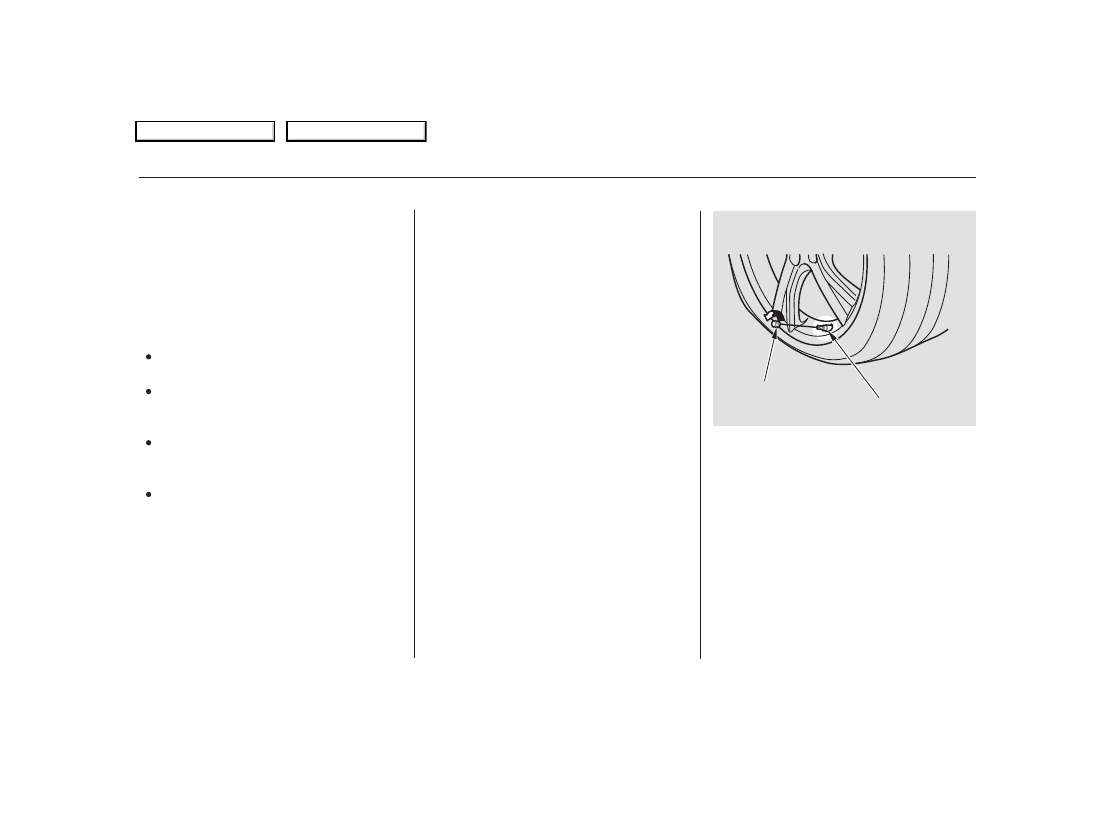Honda S2000 (2008 year). Instruction - part 14

If you have a flat tire while driving,
stop in a safe place, set the parking
brake, and thoroughly examine the
tire for a puncture or other damage.
If a puncture is wider than 3/16ths
of an inch (4 mm), or outside of the
tire tread, do not attempt to repair
the tire. Have your vehicle towed to
a Honda service center.
If the damage is smaller than
3/16ths of an inch (4 mm) and
within the tire tread, proceed with
the following instructions.
Position the vehicle so the tire
valve on the flat tire is at the
bottom of the wheel, then remove
the tire valve cap.
When making a temporary repair,
carefully follow all instructions in
this owner’s manual and in the
instructions that came with the kit.
The wheel rim is not damaged.
The puncture is located within the
tread.
The puncture is smaller than
3/16ths of an inch (4 mm).
Only one tire is flat.
To reduce weight, your vehicle is
equipped with a tire repair kit
instead of a spare tire. This kit will
allow you to temporarily repair a flat
tire under the following conditions:
1.
CR models only
Repairing a Flat Tire
How to Use the Tire Repair Kit
206
VALVE CAP
TIRE VALVE
07/07/25 17:54:45 31S2A680 0211
2008 S2000
Table Of Contents
Main Menu